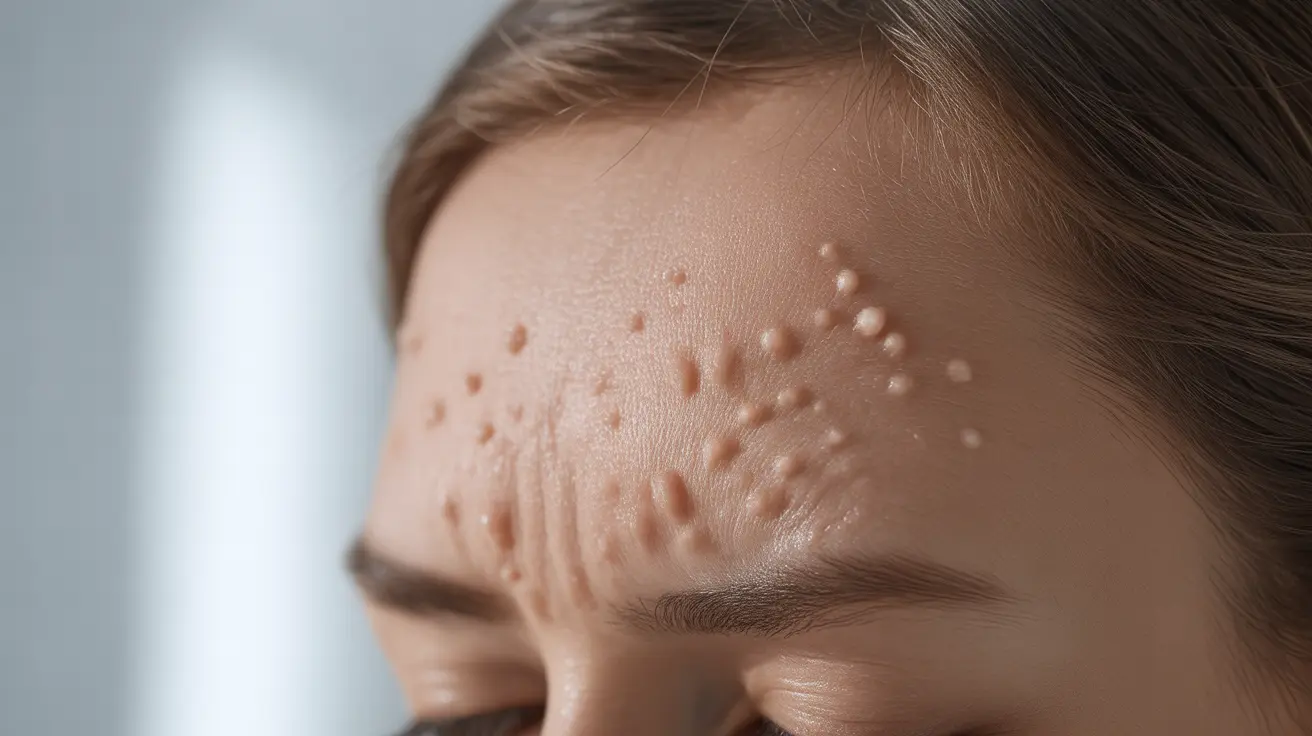If you've noticed small, flesh-colored bumps across your forehead that aren't quite typical pimples, you might be dealing with subclinical acne. This common but often misunderstood skin condition can be frustrating, especially when it seems resistant to regular acne treatments.
Understanding subclinical acne on the forehead is crucial for effective treatment. These bumps, while not inflamed like traditional acne, can affect your confidence and signal underlying skin health issues that need attention.
What Is Subclinical Acne and How to Identify It
Subclinical acne appears as tiny, uniform bumps that sit just beneath the skin's surface. Unlike regular acne, these bumps typically don't come to a head or show significant redness. On the forehead, they often cluster together, creating a textured appearance that's more noticeable in certain lighting.
Key characteristics of subclinical acne include:
- Flesh-colored or slightly white appearance
- Uniform size and shape
- Minimal inflammation
- Persistent presence
- Rough texture when touching the skin
Common Causes of Forehead Subclinical Acne
Product Build-up and Skincare Habits
One of the primary triggers for subclinical acne on the forehead is the accumulation of products and debris on the skin. Heavy hair products, particularly those containing oils and silicones, can migrate onto the forehead and clog pores. Additionally, improper removal of makeup and sunscreen can contribute to the problem.
Environmental Factors
Environmental elements play a significant role in developing subclinical acne. Excessive sweating during exercise, high humidity, and exposure to pollutants can all contribute to pore congestion and bump formation on the forehead.
Effective Treatment Strategies
Daily Skincare Routine
A consistent skincare routine is essential for managing subclinical acne. Focus on gentle but effective cleansing twice daily, using products that won't strip the skin of its natural oils. Look for cleansers containing salicylic acid or benzoyl peroxide, which can help clear congested pores.
Exfoliation Methods
Regular exfoliation is crucial for preventing and treating subclinical acne, but it's important not to overdo it. Use chemical exfoliants like AHAs (glycolic acid) or BHAs (salicylic acid) 2-3 times per week, rather than harsh physical scrubs that might irritate the skin.
Prevention and Lifestyle Changes
Prevention is often easier than treatment when it comes to subclinical acne. Consider these lifestyle adjustments:
- Keep hair products away from the forehead
- Change pillowcases regularly
- Avoid touching your face throughout the day
- Choose non-comedogenic products
- Maintain a balanced diet rich in anti-inflammatory foods
Frequently Asked Questions
What causes subclinical acne bumps on the forehead and how can I tell if that's what I have?
Subclinical acne is primarily caused by clogged pores from excess oil, dead skin cells, and product buildup. You can identify it by the presence of small, uniform, flesh-colored bumps that don't come to a head like traditional pimples.
How do I effectively treat and prevent subclinical acne on my forehead?
Effective treatment includes using gentle cleansers with active ingredients like salicylic acid, regular chemical exfoliation, and avoiding pore-clogging products. Prevention involves maintaining a consistent skincare routine and keeping hair products away from the forehead.
Can certain hair or skincare products make forehead subclinical acne worse?
Yes, heavy oils, silicones, and comedogenic ingredients in hair and skincare products can significantly worsen subclinical acne. Look for products labeled "non-comedogenic" and keep hair products away from your forehead area.
What role do diet and hormones play in developing subclinical acne on the forehead?
Hormonal fluctuations can increase oil production, contributing to subclinical acne. Diet can impact skin health, with some people experiencing improvements when reducing dairy and high-glycemic foods while increasing anti-inflammatory nutrients.
How often should I cleanse and exfoliate my forehead to manage subclinical acne safely?
Cleanse your face twice daily, and exfoliate 2-3 times per week using chemical exfoliants. Over-cleansing or excessive exfoliation can irritate the skin and worsen the condition, so maintain a balanced approach.




